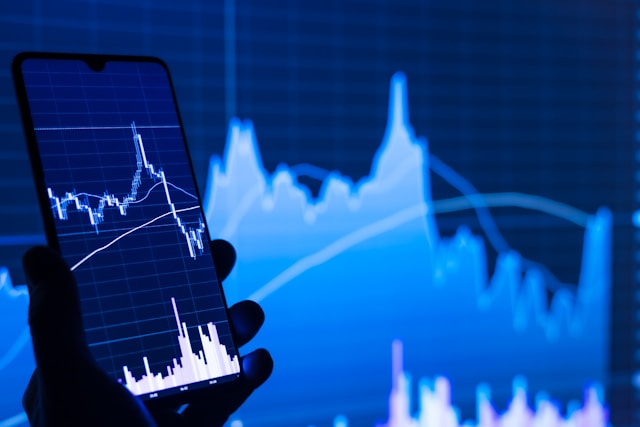OrigSmart


Energy Monitoring and Its Benefits
How It Supports Sustainability and Cost Savings?
 Energy management has become one of the most urgent issues of our time, affecting not only large corporations or industrial players but also everyday people. Global energy consumption continues to grow year after year, while increasingly strict climate protection goals are being prioritized. In such a world where every kilowatt-hour counts, the significance of energy monitoring is constantly increasing. This is not merely a technological issue but also a determining factor from economic, environmental protection, and strategic perspectives. Energy has long outgrown being viewed simply as a cost - it increasingly represents a competitive advantage for those capable of efficiently managing and optimizing their consumption.
Energy management has become one of the most urgent issues of our time, affecting not only large corporations or industrial players but also everyday people. Global energy consumption continues to grow year after year, while increasingly strict climate protection goals are being prioritized. In such a world where every kilowatt-hour counts, the significance of energy monitoring is constantly increasing. This is not merely a technological issue but also a determining factor from economic, environmental protection, and strategic perspectives. Energy has long outgrown being viewed simply as a cost - it increasingly represents a competitive advantage for those capable of efficiently managing and optimizing their consumption.
Structure
Three main components work together for this purpose. First, sensors and measuring devices collect data. These include smart electricity meters or temperature sensors that can precisely indicate when and how much energy we consume. Next comes data transmission, which could be Wi-Fi, Bluetooth, or other IoT-based networks, depending on whether we use local or cloud-based systems. Finally, analytical software interprets the incoming data, visualizes it, and enables trend identification. These three components together make transparent, detailed, and useful information available.
Benefits
The most obvious benefit such a system can offer is cost savings. It immediately becomes apparent if equipment is unnecessarily consuming electricity - for example, machines left on overnight or malfunctioning heating systems. Through energy monitoring, these points of waste can be identified and immediately addressed. A concrete example: an industrial plant implemented an energy monitoring system and quickly discovered that significant electricity was being consumed during production breaks because outdated machines still consumed substantial power in standby mode. With appropriate intervention, they achieved 15% annual energy savings - which directly reflected in their profits.
But saving money isn't only about eliminating waste. So-called dynamic pricing is becoming operational in more countries, where energy prices vary by time of day. Real-time monitoring helps adapt to these changes and schedule consumption for periods when energy is cheaper. This can be particularly useful for larger companies where flexible energy usage can result in significant savings.
Environmental aspects shouldn't be neglected either. One important outcome of energy monitoring is that it helps reduce carbon dioxide emissions. With accurate data, a company's or household's carbon footprint can be calculated, which is fundamentally important for any player serious about climate protection goals. Additionally, for those using renewable energy sources - such as solar or wind power - the monitoring system helps optimize usage. It shows when it's best to use batteries and when it's more advantageous to connect to the grid.
In the industrial and technological sectors, another advantage is that these systems contribute to extending equipment lifespan. A well-functioning monitoring system recognizes abnormal consumption patterns that might indicate impending failures. For example, if a motor requires more energy than usual, it could signal overheating or mechanical problems. This enables predictive maintenance - meaning intervention can occur before more serious issues arise. Similarly, during peak periods, the system can automatically regulate which systems receive priority, preventing overload.
Regulatory Environment
The regulatory environment is also becoming stricter, particularly in the European Union where various directives dictate energy efficiency requirements. An advanced energy monitoring system can automatically generate reports, thereby not only facilitating legal compliance but also providing essential data for ESG (Environmental, Social, and Governance) reports. This is especially important for companies emphasizing transparent operations and sustainability.
Application Areas and Future
Energy monitoring isn't just the privilege of industry. In the world of smart homes and buildings, it's increasingly becoming a basic service. Heating, ventilation, and lighting can all be automated and adapt to presence - for example, office lighting automatically turning off when no one is present. At the household level, mobile apps enable residents to control devices remotely, thereby reducing energy costs. This represents not just convenience but real savings.
Decision-making quality also significantly improves through having detailed, accurate data available. While previously we often had to rely on estimates, precise trend analyses now enable determining when investments in more energy-efficient equipment are worthwhile. Similarly, budget planning becomes more stable: energy needs can be predicted in advance, avoiding unexpected expenses.
Technological development is opening new possibilities for energy monitoring. Artificial intelligence for example can predict consumption patterns and make optimization suggestions. Through blockchain technology, transparent decentralized energy trading becomes feasible where users can even sell excess energy. The continued development of 5G networks and IoT enables even faster, more precise data transmission, supporting real-time decision making.
Summary
In conclusion, energy monitoring is not just a technical innovation but also a strategic step towards sustainability. Its benefits are wide-ranging, whether in financial savings, environmental protection, or operational efficiency improvements. As data-driven solutions become increasingly dominant worldwide, energy monitoring is becoming an indispensable element in virtually every sector. Those who invest in this technology today not only reduce their costs but also secure their competitive advantage in an era where the green transition is no longer an option but a necessity.
Zoltán Vashegyi
04.17.2025.